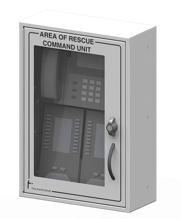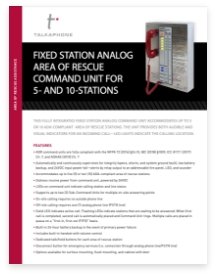
Audio communications and mass notification technologies continue to evolve and as a result, emergency notification systems are beginning to provide users several new benefits made possible with expanded capabilities and successful integration.
In its December article, “Talk isn’t Cheap if it Saves Lives,” SDM Magazine explored the growing ways to deliver messages and how users of mass notification systems can benefit from newly integrated features.
Understanding the needs of the customers is “the key to dealer and integrator success,” said Samuel Shanes, chairman and CEO for Niles, IL-based Talkaphone. “There are a lot more options and capabilities. “Bring everything together to match the way the end user wants to do it.”
According to the article, as fire systems add an intelligent voice, intercoms get a voice messaging layer and emergency telephones become more valuable with integrated features, the ways to use mass notification systems are expanding.
Personal notification technology is also evolving and allows connected or stand-alone solutions to reach people who are part of an updated database through text messages, e-mails, and social networks. To meet the growing demands for a flexible, integrated, and multi-layer mass notification platform, Talkaphone has introduced WEBS Contact Plus™, a hosted Software as a Service (SaaS) mass notification solution that is
reliable and is scalable enough to send thousands of notifications around the world almost simultaneously.
Changes made to NFPA 72 2010 are now making it possible for emergency communication systems to broadcast non-emergency messages. It doesn’t have to be a system you hope you never have to use. In fact, many schools and districts rely on mass notification for streamlined, day-to-day communications with students, faculty, staff and visitors.
Here are nine ways college campuses are using Talkaphone’s emergency notification systems to communicate informational messages.
- Class or building closing — When storms hit, use notification to alert of canceled classes or building closures caused by unsafe conditions, flooded parking lots or power outages.
- Unplanned staffing changes — Use notification to put out a call for qualified alternates when teachers are unable to make it to class.
- Faculty and student updates — Notify faculty about a meeting update; alert students if a class venue has changed, remind them of approaching or shifting deadlines, special events or a change in office hours.
- Security team management — Use notification to alert your security teams of potential incidents and to request a quick location response from each guard to help you better manage a situation.
- Health warning — Notify students and faculty when there is an outbreak on campus, alerting them to risk, directing them to resources, describing warning signs and explaining which symptoms need immediate attention.
- IT uptime — Use notification to streamline internal IT operations; quickly alert appropriate IT team members when systems lag or fail.
- Polling — Deliver quick multi-question surveys, with an immediate response requested, to give students and faculty a voice on issues.
- Event announcements — Use notification to remind students and parents of special events.
- Campus evacuations — Use notification to alert students, staff and faculty of dangerous situations like bomb threats or chemical spills. Direct them to avoid the area of impact while notifying police and emergency responders.








